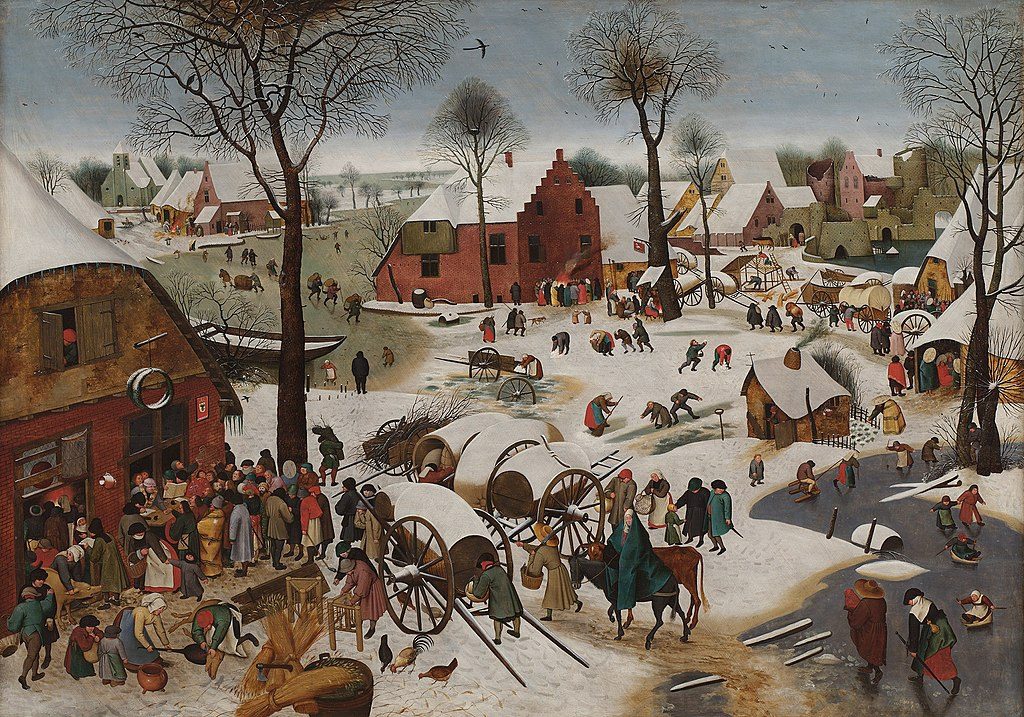One new discovery of the work of an Old Master would be one thing; two begins to look like a mystery by Dan Brown, but better written. The Old Masters are the father and son Pieter Breugel and his son, coincidentally named Pieter, hence known as the Elder and the Younger.
The first mystery was the painting known as the Census in Bethlemen, apparently depicting a scene from the Bible in which the Roman Emperor Caesar Augustus called on all Jews in the province of Judea to return to the place of their origin in order to be counted. This led a couple named Joseph and a haviy pregnant Mary to return to Joseph’s home town of Bethlehem of Judea (nobody cared about Mary’s home town, as she was the property of Joseph). While there, she went into labour, and the rest is the stuff of Christmas carols.
The Census appears to show the scene of the census, but not according to KUL researchers Sabine van Sprang en Tine Meganck, both art historians.
Judging by the depiction of buildings within the painting, the scene taking place is not in fact a biblical census ordred by a Roman empereror, but the simple collection of taxes by the local authority. Authority for this comes from Breugel’s depiction of the Castle at Wijnegem, seen in the foreground, which was the scene of such annual collections.
Local taxpayers can be seen waiting in a queue – a scene familiar to local taxpayers in Flanders.
The researchers have also identified the patron of the painting, one Jan Vlemick, a rich Antwerp tradesman whose castle in Wijnegem the property is shown. He is the beneficiary of the tax collected (and appears to equates to Caesar's tax) but seems to think little of the practice.
The original of the Census painting was by Breugel the Elder, although his son’s copy is the better-known.
Meanwhile a painting by the father, taken for restoration from the walls of the Mayer van den Bergh museum in Antwerp more than a year ago, has revealed secrets of its own.
The character of Dulle Griet is considered to be a crazy woman whose job is to serve in a bistro – a nightmarish place populated by dream-like dwarves, elves and even tiny armed soldiers.
Before the restoration, the painting was found to be drawn in a hellish red landscape, quite different from its more normal colouration. The new version placed Dulle Griet (which one might translate as Crazy Broad) central to the design, as well as making her more external to the hellish environment to the bistro, which is something any present or one-time server will relate to.
Alan Hope
The Brussels Times

